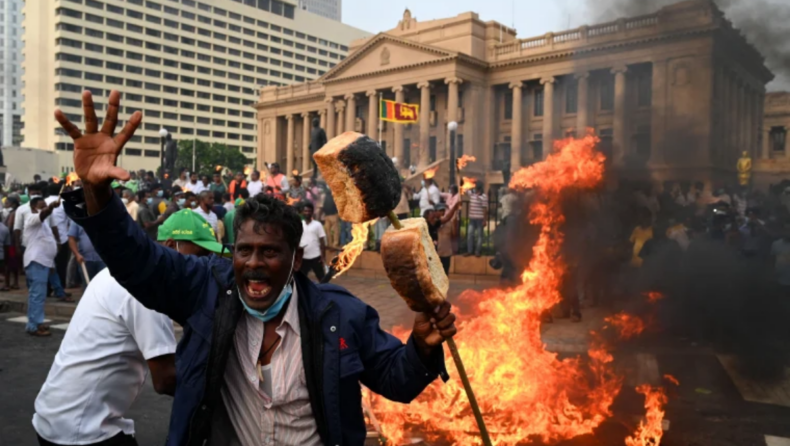Due to a severe currency shortage, Rajapaksa’s government has been unable to pay for basic imports such as fuel, resulting in devastating power outages lasting up to 13 hours. Sri Lankans on the ground are also confronted with shortages and skyrocketing costs.
Anger at Sri Lankan President Gotabaya Rajapaksa’s handling of the island nation’s mounting economic crisis erupted into violence, with hundreds of protestors clashing for several hours with police. The government issued an island-wide curfew on Saturday, limiting travel until Monday morning.
Sri Lanka is undergoing a severe economic collapse, which has resulted in acute food shortages and widespread resentment. Due to a severe currency shortage, Rajapaksa’s government has been unable to pay for basic imports such as fuel, resulting in devastating power outages lasting up to 13 hours.
Ordinary Sri Lankans are also experiencing shortages and rising inflation as a result of the country’s sharp currency devaluation last month in preparation for talks with the International Monetary Fund (IMF) over a loan programme.
What triggered the problem in the first place?
On the surface, successive governments’ economic mismanagement and a series of ill-advised decisions, such as banning the use of chemical fertilizers and deep tax cuts promised by President Rajapaksha during his 2019 election campaign months before the COVID-19 pandemic decimated Sri Lanka’s major tourism sector and also stopped foreign remittances. This mismanagement created and sustained a twin deficit – a budget shortfall alongside a current account deficit.
“Sri Lanka is a classic twin deficits economy,” said a 2019 Asian Development Bank working paper. “Twin deficits signal that a country’s national expenditure exceeds its national income, and that its production of tradable goods and services is inadequate.”
However, two major events in the recent past — the bombings on Easter Sunday in 2019 that discouraged travellers and the pandemic that began in early 2020 — have slowed the recovery and drained the economy even further. Decisions taken during this time of exceptional crisis have proven to be costly for Rajapaksa’s regime.
The Rajapaksa government’s decision to ban all chemical fertilizers in 2021, a move that was later reversed, also hit the country’s farm sector and triggered a drop in the critical rice crop. Weak and indebted government policies, along with the lasting effects of pandemic illness, hastened the downward spiral.
In the wake of the pandemic, credit ratings organizations lowered Sri Lanka’s credit rating, thereby preventing it from accessing international funding markets.
For its debt management plan, which relied on accessing such markets, Sri Lanka’s foreign exchange reserves plunged by approximately 70 percent in two years.
Only $2.31 billion remained in the country’s reserves as of February, yet the country must pay back around $4 billion in debt by 2022, including a $1 billion international sovereign bond (ISB). An estimated $12.55 billions of Sri Lanka’s foreign debt is owed to international development banks like the Asian Development Bank, as well as countries like Japan and China.
Who are among helping hands to Sri-Lanka’s crisis?
Despite mounting dangers, Rajapaksa’s administration and the Central Bank of Sri Lanka (CBSL) rebuffed calls for IMF assistance for months. After the Russian invasion of Ukraine in late February, the administration decided to contact the IMF in April.
Sri Lanka depreciated its currency before approaching the IMF, escalating inflation and aggravating the plight of the poor, who face hardship and long lineups.
In the meantime, Rajapaksa has asked China and India for support, notably with petroleum. A $500 million credit line negotiated with India in February is anticipated to provide diesel on Saturday. For imports of food and medicine, Sri Lanka and India have inked a $1 billion credit line, with the Rajapaksa government seeking at least another $1 billion from Delhi.
After a $1.5 billion swap and a $1.3 billion syndicated loan to the government, China is considering a $1.5 billion credit facility and a $1 billion standalone loan to the island nation.
Published By : Revathy G Sanal
Edited By : Subbuthai Padma













